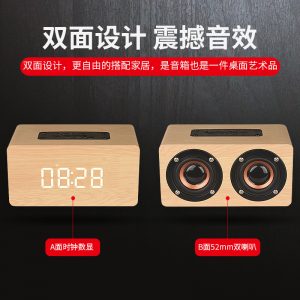Bluetooth headphones have evolved significantly over the years, going through multiple generations and advancements. Here’s an overview of their evolution:
- Early Bluetooth Headsets: Bluetooth technology was first introduced in the early 2000s, and the initial Bluetooth headsets were primarily designed for hands-free calling with mobile phones. These headsets were small, lightweight, and often had a single earpiece.
- Stereo Bluetooth Headsets: As Bluetooth technology improved, stereo audio capabilities were introduced, allowing for the development of stereo Bluetooth headphones. These headphones provided a wireless way to listen to music and other audio from devices like smartphones and computers.
- Advanced Audio Distribution Profile (A2DP): The A2DP profile, introduced in the mid-2000s, enabled high-quality stereo audio streaming over Bluetooth connections. This led to better sound quality in stereo Bluetooth headphones, making them more appealing for music enthusiasts.
- Noise Cancellation and Improved Sound Quality: Bluetooth headphones started incorporating noise-cancellation technology, enhancing audio clarity by reducing ambient background noise. This technology improved the listening experience in various environments.
- True Wireless Earbuds: One of the significant advancements was the introduction of true wireless earbuds, which began gaining popularity around 2015. These earbuds removed all wires and cables, offering a more compact and convenient form factor. They also introduced features like touch controls and automatic pairing.
- Bluetooth 5.0: Bluetooth 5.0, released in 2016, brought improvements in terms of range, data transfer speed, and connectivity stability. This technology allowed for more reliable wireless connections between headphones and devices.
- Advanced Features: Modern Bluetooth headphones come with an array of advanced features such as:
- Active Noise Cancellation (ANC): ANC technology improved, offering better noise isolation and audio quality by canceling out external sounds.
- Transparency Modes: Some headphones introduced transparency modes that allow external sounds to be heard while wearing the headphones, enhancing safety and awareness in certain situations.
- Voice Assistants: Integration of voice assistants like Siri, Google Assistant, and Alexa became common, allowing users to control their headphones with voice commands.
- Gesture Controls: Touch and gesture controls on the earbuds themselves became more intuitive for managing audio playback, calls, and more.
- Multipoint Connectivity: Some headphones started offering multipoint connectivity, allowing users to connect to multiple devices simultaneously.
- High-Resolution Audio Support: With the rise of high-resolution audio formats, some Bluetooth headphones started supporting advanced codecs like aptX HD and LDAC, enabling better audio quality for those who are particular about sound fidelity.
- Better Battery Life: Advancements in battery technology and power efficiency led to Bluetooth headphones with longer battery life, allowing for extended usage between charges.
- Customization and Apps: Some Bluetooth headphones come with companion apps that allow users to customize sound profiles, monitor battery life, and access firmware updates.
- Integration with Smart Devices: Bluetooth headphones began integrating with smart devices and ecosystems, allowing for seamless connectivity and control across various devices.
- Bluetooth 5.2 and Beyond: Bluetooth technology continues to evolve with each new iteration, bringing improvements in efficiency, range, and capabilities.
The evolution of Bluetooth headphones has been driven by advancements in wireless technology, audio quality, design, and user experience. These headphones have become an essential accessory for both communication and entertainment, catering to a wide range of user preferences and needs.












